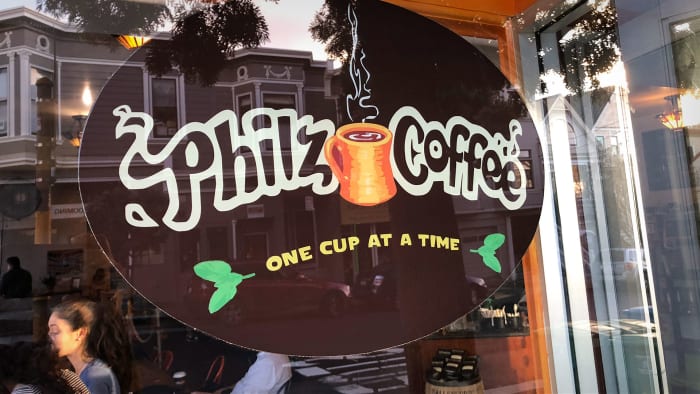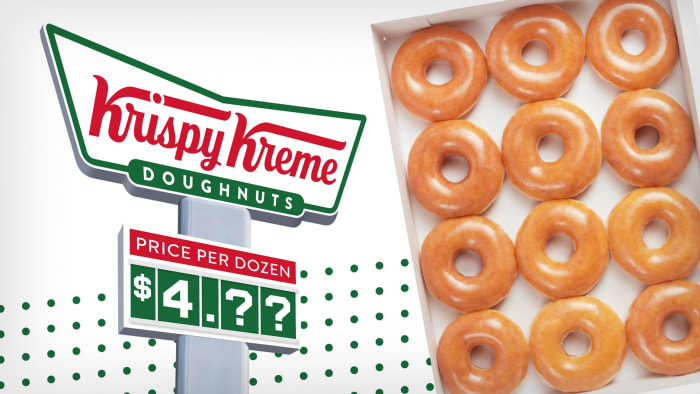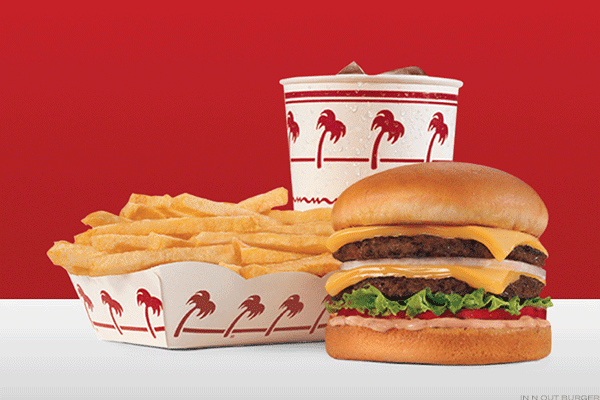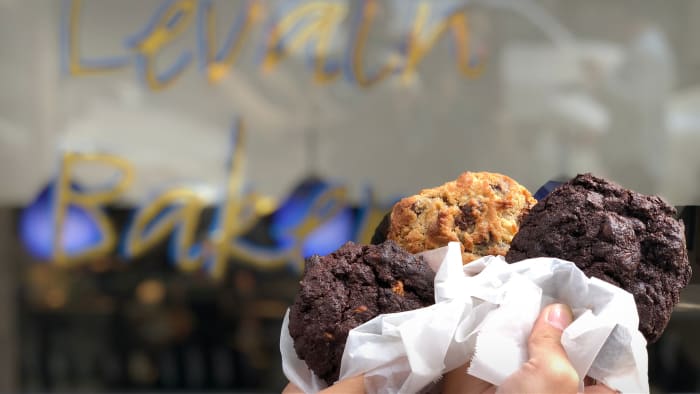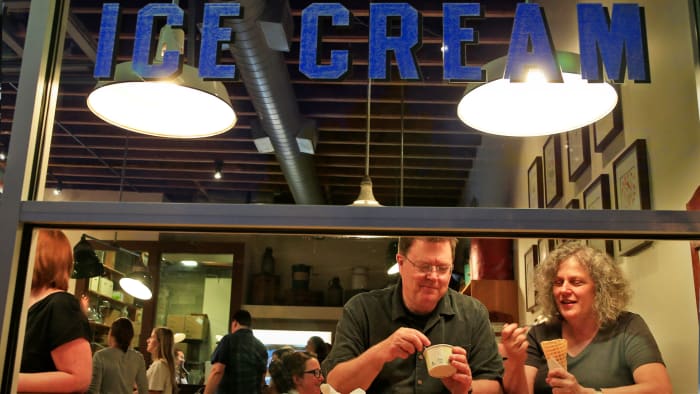5 Regional Food Chains You’ll Wish Were Near You
With thousands of dining options out there, it is impossible to remember them all.
In fact, the United States holds approximately 700,000 pubs, restaurants, and cafes. But how can people recognize up-and-coming restaurants before they reach peak fame?
With this in mind, here are five popular regional dining options you may or may not have heard of that you should keep your eyes peeled for when you travel.
Philz Coffee
Similar to Dunkin’ (DNKN) – Get Dunkin’ Brands Group, Inc. Report or Starbucks (SBUX) – Get Starbucks Corporation Report, Philz Coffee has become California’s local café. Created by Phil Jaber and run by CEO Mahesh Sadarangani, its marketing strategy focuses on minimalism and providing a local connection.
Philz Coffee has now opened up locations in five different cities: San Francisco/Bay Area, Los Angeles, San Diego, Washington D.C., and Chicago. The coffee shop offers fourteen different coffee blends across four roast profiles, including dark, medium, light, decaf, and one single origin varietal (hazelnut, aromas: almond/milk chocolate). It also sells teas, gift cards, and various forms of merchandise.
Interestingly, Philz Coffee does not use espresso. All of its coffee based drinks are made using pour over techniques. It also features some menu items that are very specific, like Ecstatic Iced Coffee, Mocha Tesora, Iced Mint Mojito, Iced Coffee Rose, and more. Milk alterations — such as subbing the common whole milk for oat, almond, soy, etc. — is actually free at Philz. It also prides itself as part of the Sustainable Coffee Challenge, which is referred to on its website as “A global initiative to make coffee the first sustainable commodity.”
Philz Coffee began in 2003 and now has 70 locations. The coffee chain pulls in annual sales of more than $1.7 million per store and is on the rise. Those who find Philz Coffee attractive should keep an eye out for it, especially as it continues competing with Starbucks and Dunkin’.
Krispy Kreme
Krispy Kreme (DNUT) – Get Krispy Kreme Inc. Report has been known as Dunkin’s competitor for a long time. It was founded on July 13, 1937, in Winston-Salem, N.C., by Vernon Rudolph. Originally, the donuts were only sold to local grocery stores. As the popularity grew, so did the business, with now 1,400 shops and counting.
What makes Krispy Kreme different? Firstly, Krispy Kreme is not in every state. In fact, there are 14 U.S. states and territories without these delicious donuts. Some of the donuts are also made in-house, with a glass wall surrounding a conveyer belt baking and glazing the donuts for all to watch.
The franchise also offers unique deals to its customers surrounding free donuts. When the covid-19 vaccine came out, Krispy Kreme offered a free donut every day to customers who provided proof of vaccination. The franchise also offers a free donut for every A on a student’s report card, and 2020 graduates also received a free “Graduate Dozen” donuts! If you’re curious about a deal right now, as of June 8, free original glazed donuts will be given out when the company’s famous “Hot Light” is on.
Scroll to Continue
Krispy Kreme used to be a private company but switched back to public on July 1, 2021, and is currently owned by JAB Holding Company. If you’re interested in becoming a franchise owner for Krispy Kreme, check this out.
In-N-Out Burger
As you probably have heard, In-N-Out Burger continues its delicious legacy as a fast food restaurant unique to California, Nevada, Arizona, Utah, Texas, and Oregon. Lynsi Lavelle Snyder-Ellingson, the owner and president of In-N-Out, holds a net worth of $4.2 billion.
In-and-Out is known for its beef patties, which are free from fillers, preservatives, and additives, as well as its freshly cut potatoes (done in store) for its famous french fries. It also has a “secret” menu, allowing people to customize their orders, such as in “Animal Style” that essentially adds In-N-Out’s famous sauce and grilled onions. The chain does so well that its annual revenue as of 2021 was $575 million.
Will In-N-Out Burger ever branch out of the West Coast? Answers are unclear. So far, it has focused on creating more than 334 locations in the six states mentioned earlier. In-N-Out Burger pop ups have also been found around the globe.
Levain Bakery
Have you ever heard of the NYC favorite Levain Bakery? It was created in 1995 by Pam Weekes and Connie McDonald. The bakery has eight locations with more expected to come in the future.
Levain focuses on perfecting its notorious menu item: cookies. Its cookies are uniquely thick, gooey, and crunchy. They are huge and delicious! In fact, its most popular cookie is the Chocolate Chip Walnut cookie. However, there are many more flavors such as Two Chip Chocolate Chip Cookie, Dark Chocolate Chip Cookie, Oatmeal Raisin Cookie, and Dark Chocolate Peanut Butter Cookie. More recently, the bakery decided to sell frozen batches of its cookies at select grocery stores.
Levain’s estimated annual revenue is at an estimated $44 million. Levain Bakery was acquired by the Stripes Group, a private equity firm. Though private, the group has stated that it’s beginning to expand nationally, so definitely keep an eye out for Levain Bakery near you in the future!
Salt & Straw
Salt & Straw was founded by Kimberly Malek in 2011. Its unique name matches perfectly with what it sells: ice cream. The ice cream flavors range from Chocolate Nocino Cherry Pie to Pear & Blue Cheese. The company also is famous for its vegan options, including Mathilde’s Hibiscus & Coconut Sherbet and Pink Rosé & Watermelon Sorbet.
The company currently operates 15 shops all located in Oregon, Los Angeles, San Diego, Seattle, and Miami. Not near these areas? That’s fine, Salt & Straw also ships domestically.
Celebrities such as Dwayne “The Rock” Johnson and business partner Dany Garcia invested a nondisclosed amount into Salt & Straw back in 2019, also acting as creative partners and strategic advisors for the ice cream brand. It also received $4.2 million in funding earlier that year, with $2 million coming from Oregon Venture Fund and the other $2.2 million coming from individual investors.

